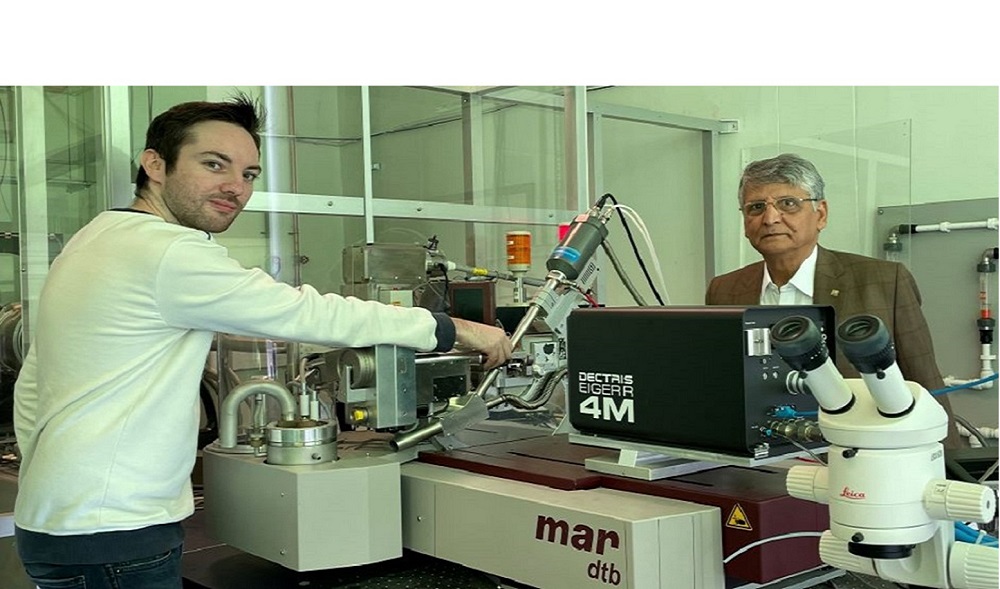Our History
The Laboratory was established by the University following the appointment of the first Max Perutz Professor of Molecular Biophysics in 2008, Professor Samar Hasnain, who is a fellow of the Institute of Physics and Fellow of the Royal Society of Chemistry.
The Inauguration of this first chair, named after Max Perutz (Nobel prize, Chemistry, 1964), the father of Protein Crystallography and founding Chair of famous MRC Laboratory of Molecular Biology, was attended by many international structural biology leaders where lectures were given by Professor Robin Perutz, Dr. Richard Henderson (Nobel Laureate, Chemistry 2017), Prof Zhie Rao (Academician, CAS and the President of Nankai University at the time), Sir Tom Blundell and Dame Louise Johnson among others.
The Barkla X-ray laboratory was commissioned and opened in 2011, almost 100 years after the first crystallographic experiment was performed in the world in 1912 by Max von Laue (Nobel prize winner, Physics 1914). This was inspired by the work of Charles Glover Barkla who had established the electromagnetic nature of X-rays (Nobel prize, Physics 1917) during his time in Liverpool as a Lecturer in 1905-1909 (after being educated in Physics at Liverpool.)
The Facility
The facility uses the Rigaku FR-E+ Superbright microfocus rotating anode generator. Operating in a distinctive dual port mode, the system is used for structural studies in biological, medical and polymer sciences. One X-ray port represents a state of the art set up for laboratory-based protein crystallography, while the second is used for small angle X-ray scattering (SAXS) experiments where Size Exclusion Chrotomography (SEC) and Light scattering are combined to provide SEC-SAXS facility.
The laboratory has received significant upgrades both for X-ray optics and detectors by research grants. The latest upgrade was led by the co-director of the Barkla Laboratory, Dr Svetlana Antonyuk, in 2017 that equipped the crystallographic arm of the facility with an EIGER R 4M detector, a detector which just a few years ago were only to be found at the powerful synchrotron beamlines.
These X-ray capabilities have helped Liverpool sustain its Beam Allocation Group (BAG) status at the DIAMOND (Didcot, Oxfordshire) and SOLEIL (Paris, France), providing Liverpool scientists regular access to powerful synchrotron radiation facilities. This BAG access was won by Professor Samar Hasnain in 2010, who remains the co-ordinator for the programme, expanding the network of scientists that utilise these powerful facilities. Hasnain and Antonyuk have also become a member of the Northern cryoEM (cryo Electron Microscopy) BAG for the national Electron Bio-Imaging centre.
The Barkla and DIAMOND BAG community brings together over half a dozen group leaders with a wide range of science representing the breadth of the Institute (ISMIB) and the Department’s (Biochemistry and Systems Biology) in X-ray Structural Biology.
Our Research
Our long standing research foci have been:
(i) understanding of the enzymes in the nitrogen cycle with particular emphasis during the last decade on enzymes involved in the denitrification pathway that catalyse the conversion of nitrite and nitric oxide,
(ii) discovering the disease causing structural properties of proteins involved in neurodegenerative disease particularly motor neuron disease and then using structure-guided approaches to obtain drug-candidates,
(iii) understanding the structural basis of toxicity for a number of antimalarials that target cytochrome bc1 complex and then harnessing the differences in quinol sites of the host and falciparum to provide structure-guidance for the next phase of compounds. Recently, the team has been working on finding therapeutic compounds that are effective against SARS-cov-2 main protease.
Back to: Research
